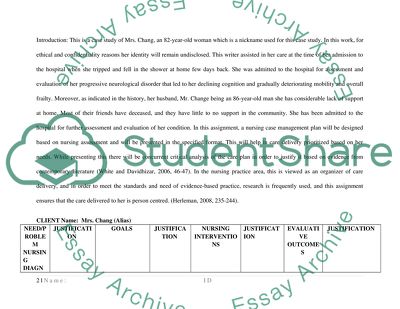Cite this document
(Nursing Case Management Plan Assignment Example | Topics and Well Written Essays - 3000 words, n.d.)
Nursing Case Management Plan Assignment Example | Topics and Well Written Essays - 3000 words. Retrieved from https://studentshare.org/nursing/1500490-nursing-case-management-plan
Nursing Case Management Plan Assignment Example | Topics and Well Written Essays - 3000 words. Retrieved from https://studentshare.org/nursing/1500490-nursing-case-management-plan
(Nursing Case Management Plan Assignment Example | Topics and Well Written Essays - 3000 Words)
Nursing Case Management Plan Assignment Example | Topics and Well Written Essays - 3000 Words. https://studentshare.org/nursing/1500490-nursing-case-management-plan.
Nursing Case Management Plan Assignment Example | Topics and Well Written Essays - 3000 Words. https://studentshare.org/nursing/1500490-nursing-case-management-plan.
“Nursing Case Management Plan Assignment Example | Topics and Well Written Essays - 3000 Words”, n.d. https://studentshare.org/nursing/1500490-nursing-case-management-plan.


